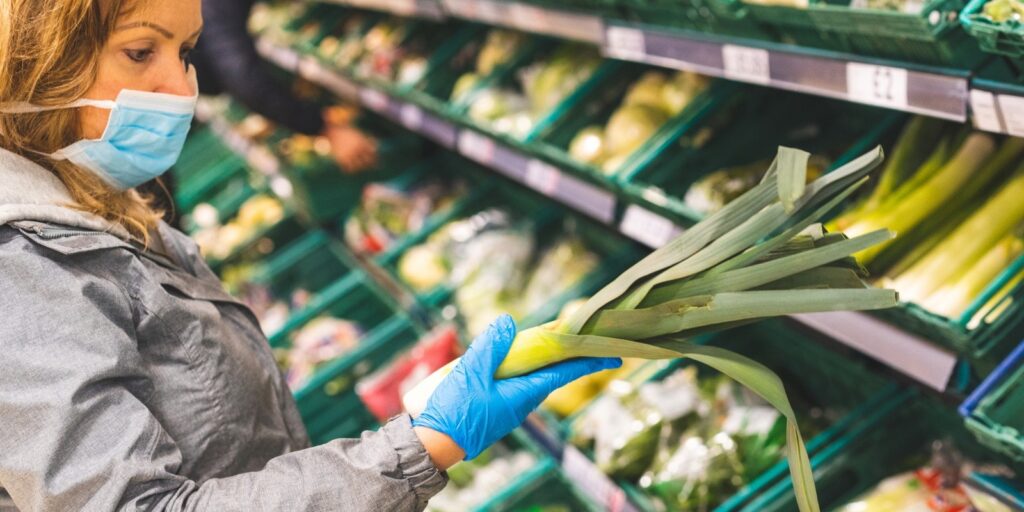It’s no secret that 2020 has upended shopper behavior. As the world begins its slow pivot from managing the COVID-19 crisis to recovery and the reopening of economies, it’s clear that the period of lockdown will have a profound impact on how we live and how we shop well beyond the crisis period.
Armed with that knowledge, our most recent Marketing Matters webinar unveiled 5 key realities that we as marketers can respond to with action in order to help our brands connect with shoppers.
Key Realities to Respond to with Action
1. Consumers are experimenting with new brands/products.
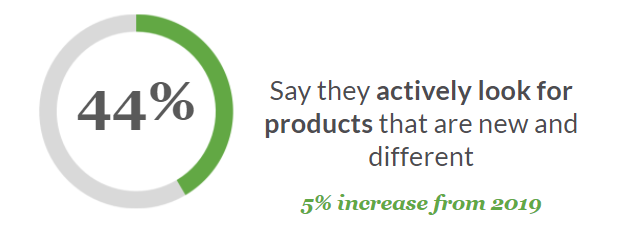 Statistic from McKinsey & Company
Statistic from McKinsey & Company
With nearly half of shoppers seeking out new products and brands, NOW is the time to clearly and effectively communicate your brand value and your product solutions to consumers.
That may require new photography and recipes to keep your content fresh and inviting. It may also mean launching a blog or building out a consistent social media calendar and investing in advertising dollars. And we highly recommend adding a store locator to your website if you don’t already have one. We are seeing consistent success with our efforts to direct ad traffic to store locators so shoppers can find the products we are promoting. We’re certain you can too!

Key Takeaway:
While so much of our shoppers’ day-to-day life has slowed down, your marketing should be doing just the opposite.
2. More shoppers are making purpose-driven buying decisions.
How far do values and authenticity go for these shoppers? In IBM’s report “Meet the 2020 consumers driving change”, they found that 57% of respondents are willing to change their purchasing habits to help reduce negative environmental impact and 71% indicate that they are willing to pay a premium for brands that provide transparency about where their products are grown. For many floral and fresh produce brands that we know, those are two areas of brand messaging that are well aligned with this data and just begging for marketers to leverage in key touchpoints.
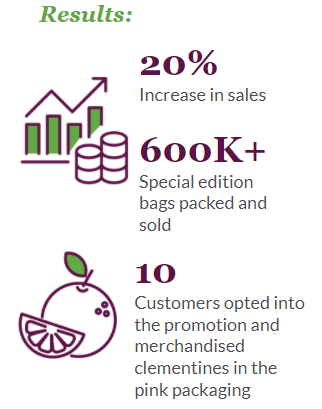
Another type of purpose-driven messaging is with philanthropic tie-ins such as the LGS Pink Packaging campaign.
LGS Sales has been a proud supporter of Susan G Komen’s Race for the Cure for several years and in 2021, took that a step farther with a special pink packaging integration that put their purpose right on the store shelf.
This campaign led to a 20% increase in sales and more than 600,000 special edition bags sold. It worked well not only due to the attractive, new packaging but also due to LGS Sales’ clear presentation of purpose and brand values. This is a great example of sharing an authentic purpose to grab the attention purpose-driven shoppers.
In the most genuine way possible, give purpose-driven shoppers a fair chance to know what your company stands for. Communication is key. We understand that it can sometimes feel uncomfortable to mingle marketing and philanthropic initiatives. But the reality is that shoppers want to know that companies care about more than their bottom line, and that means we have to communicate the ways we support our communities and those who need support the most.
Key Takeaway:
Be authentic and transparent with the causes your brand is aligned with so that like-minded shoppers can easily make a connection.
3. Shoppers need meal inspiration.
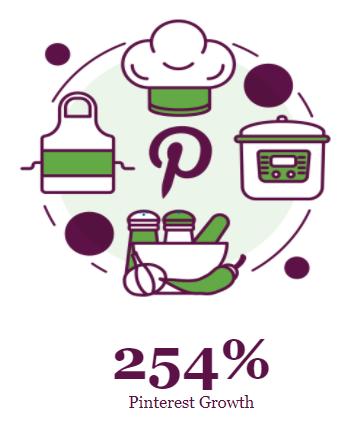 Changes in household income, concern for COVID exposure, and restaurant closures have all led to more meals cooked and consumed in the home.
Changes in household income, concern for COVID exposure, and restaurant closures have all led to more meals cooked and consumed in the home.
This is huge life shift for an equally huge portion of the population that could not align more perfectly with the job of fresh produce marketers!
Pinterest has had quite the comeback in 2020.
Over the last year when shoppers have been actively seeking recipe inspiration, Pinterest shares have grown 254% and are expected to continue.
Recipe content certainly played a role here, but so did posts relating to other lifestyle improvements that we’ll cover in our next marketing reality. The main point we need to take away here is that that Pinterest is only expected to continue growing and has by necessity become a more regular part of people’s lives once again.
Key Takeaway:
Invest in a Pinterest strategy that elevates your brand where shoppers are looking.
4. Shoppers are focused on life beyond the table.
2020 saw a huge increase in searches for stress relief through re-establishing routine, exercising in new environments, finding ways to wind down at night, and figuring out what to do with stir-crazy kids. And meditation gurus aren’t the only ones providing content. We saw brands across the board being helpful and empathetic.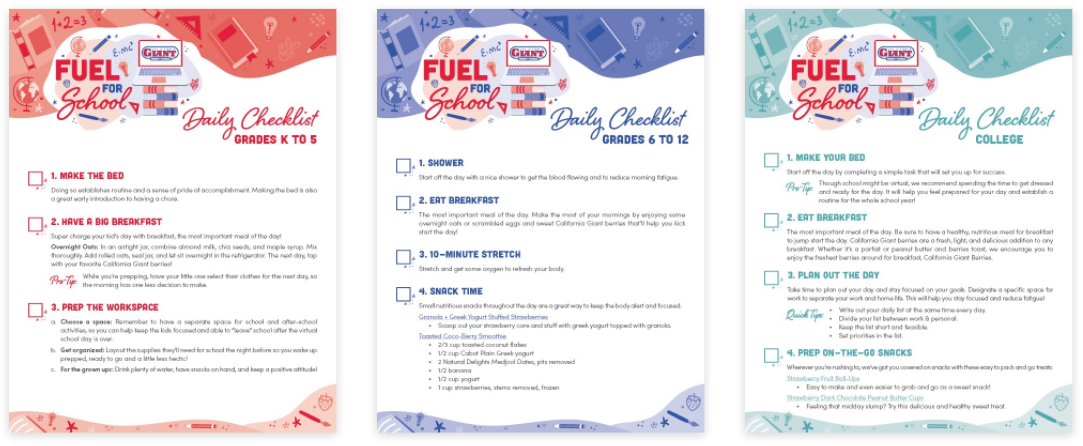
Produce and floral naturally align with health and wellness conversations, yet there are so many aspects of health and wellness beyond simply the food we eat and flowers we see. California Giant leaned into this opportunity in 2020 with a series of daily checklists to inspire shoppers to maintain structure and routine despite changes around them. They spoke to all of their audiences from moms to college students.
Key Takeaway:
Give shoppers authentic and relatable content beyond just your products because it deepens loyalty and engagement.
5. Home care is the new self care.
This marketing reality, in particular, is catered more towards our floral audience. Though the sentiment applies to both fresh produce and floral.
With a renewed focus of wellness in 2020, nature as a whole has become center stage. Floral marketers joining us today, this is especially important for you as you think through developing strategic marketing campaigns that align with Gen Z and Millennials.
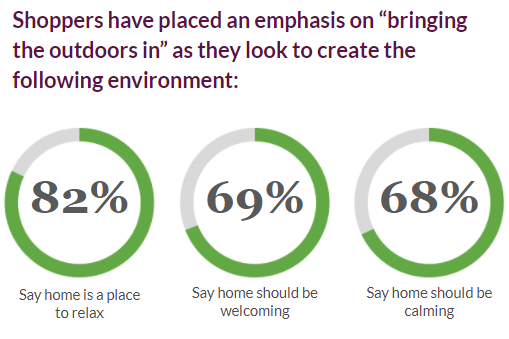
Source: YPulse
What this insight has shown us is the strong alignment between “self-care” and incorporating natural, outdoor elements – into our homes. This provides a fantastic opportunity for the floral industry to recognize how consumers want to nurture themselves with nature and what that means for how you are positioning your content online and in stores. This is also a nod to fresh produce marketers – as a beautiful meal looks better with a vase of fresh flowers!
The strong focus on wellness in 2020 and the positive implications of flowers on improved mental health has moved the floral industry into the spotlight. At the same time, there are very specific trends that overlap to give floral marketers a sense of direction and a goal to reach for in the coming months.
Key Takeaway:
Inspire shoppers with organically styled floral compositions in your photography that represents a more raw, natural look that aligns with the desire to be nurtured by the outdoors.
If you’d like to learn more, download the deck or check out the recording! How else did you see shopper behavior change in 2020? Send us a note at info@dma-solutions.com.
{{cta(‘2ad16cba-fe1e-4622-a1f8-403bc3eb0359′,’justifycenter’)}}
